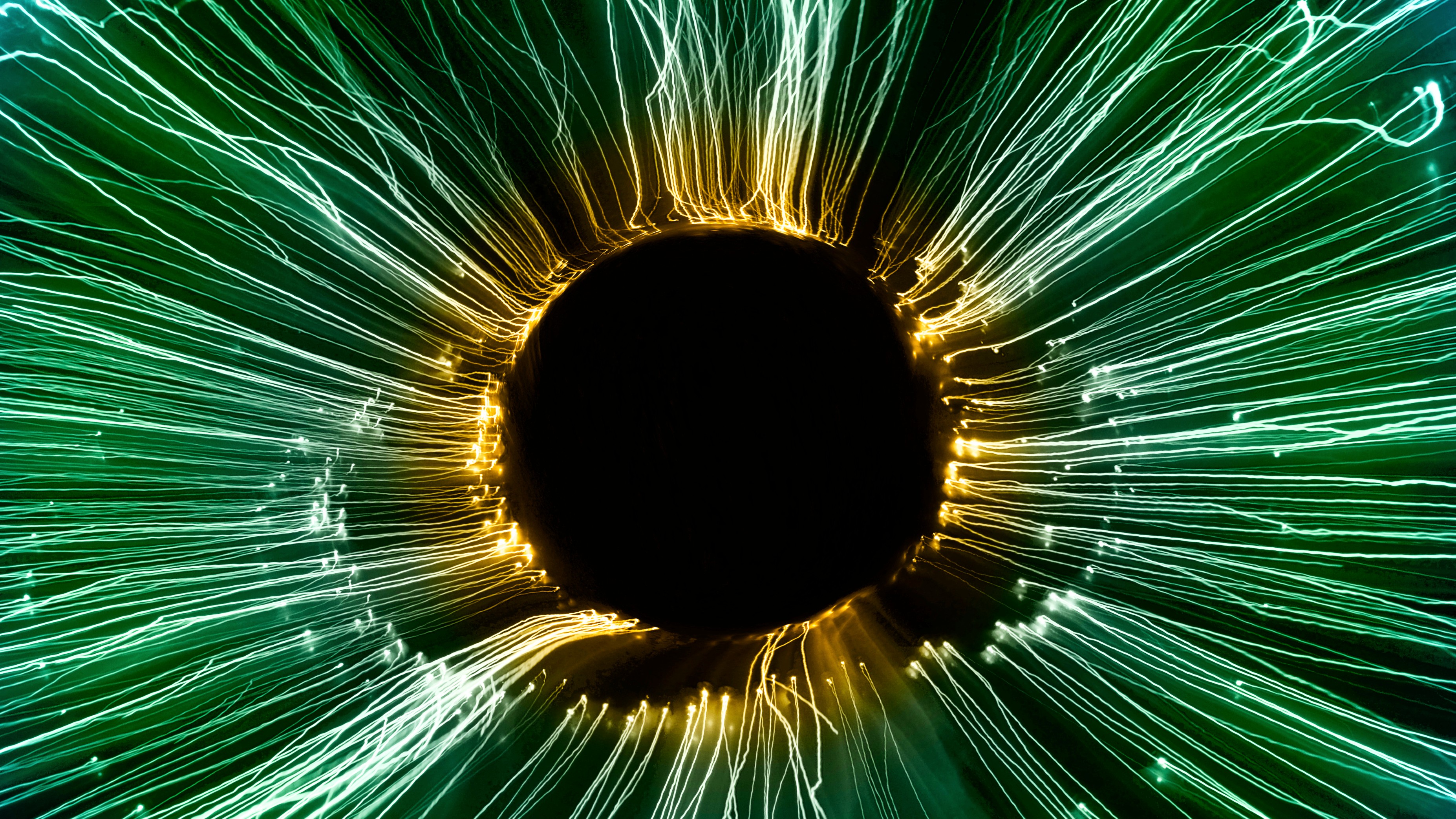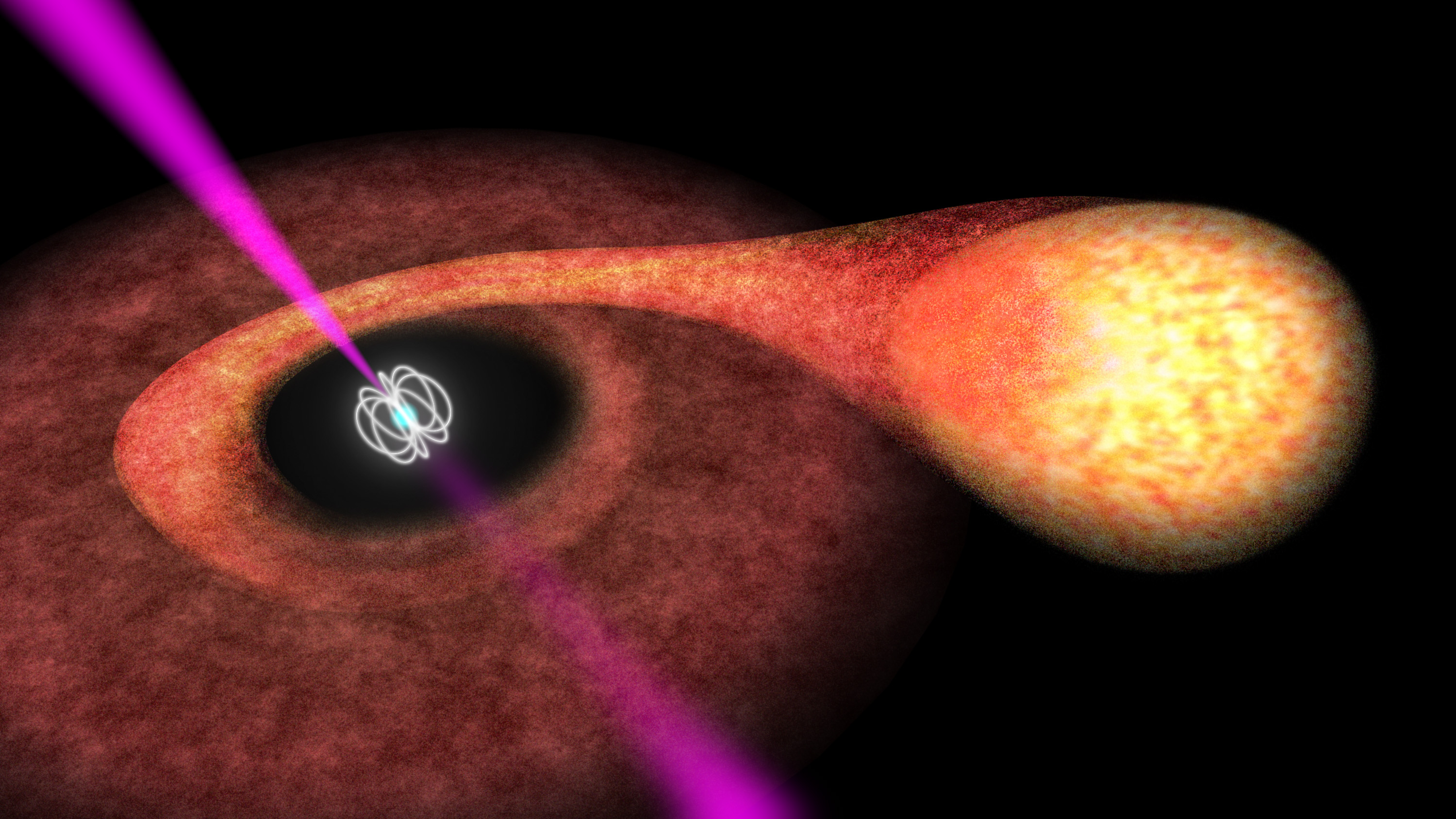New LIGO Events Demolish The Idea Of A ‘Mass Gap’ Between Neutron Stars And Black Holes
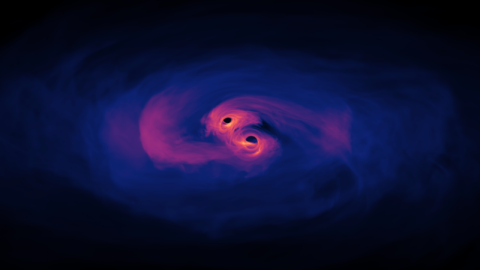
A year ago, a puzzling gap existed between black holes and neutron stars. With nearly a year of new data, LIGO solves the puzzle.
On Monday, March 16, 2020, astrophysicist Carl Rodriguez expressed a sentiment echoed by gravitational wave physicists all across the world: NOT NOW LIGO! Just minutes earlier, the LIGO collaboration sent out an alert suggesting that it had just detected another gravitational wave event, the 56th candidate detection since starting up its latest data-taking run in April of 2019. This one appears to indicate the merger of two black holes, like so many others before it.
Unlike most of the others, however, this one might be the nail-in-the-coffin of the idea of a “mass gap” between neutron stars and black holes. Before LIGO turned back on last April, all of its events, combined with otherwise-known neutron stars and black holes, showed two distinct populations: low-mass neutron stars (below 2.5 solar masses) and high-mass black holes (5 solar masses and up). This latest event, however, falls right into the mass gap range, and could demolish the idea once and for all.
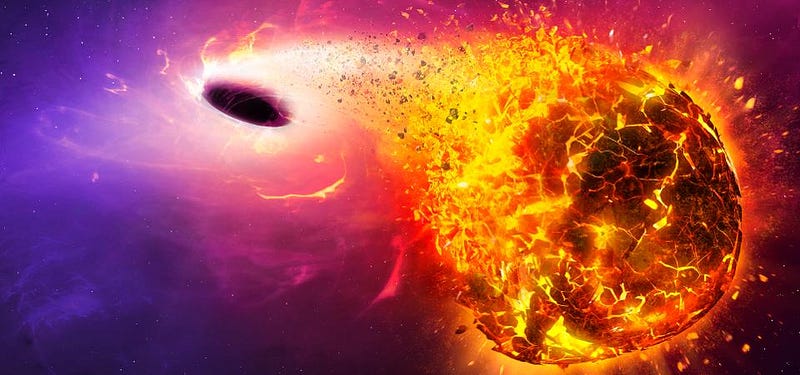
Prior to 2015, the year that the National Science Foundation’s twin advanced LIGO detectors began operations, we didn’t know all that much about what was out there as far as black holes and neutron stars went. We knew that when massive stars run out of fuel, they can end their lives in a catastrophic explosion: a type II supernova. In these events, the star’s core collapses while it undergoes a runaway fusion reaction, destroying the star in the process.
This can lead to the formation of a neutron star for stars that are on the smaller, less massive side, or a black hole for stars on the heavier, more massive side. (There are other, more technical factors at play as well, such as the abundance of heavy elements in the star.) In general, stars above a certain mass will produce black holes, while stars below a certain mass will produce neutron stars.
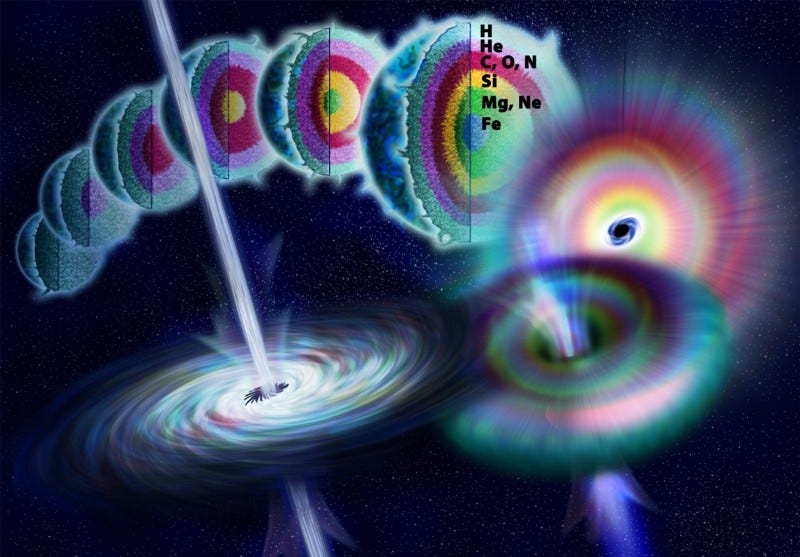
But prior to LIGO’s turn-on in 2015, we didn’t see a continuum of remnant masses. For black holes, the primary way we had of detecting them came from X-ray binary systems: where a large star is in a relatively close orbit with a much smaller, denser, collapsed object. These X-ray binaries can have either a black hole or a neutron star orbited by a “donor star,” which has its mass siphoned off by the smaller object.
The process of transfer, accretion, and acceleration leads to the emissions of X-rays, which enables us to infer the mass of the collapsed object. For neutron stars, there are other methods to measure their mass as well. However, instead of a continuous spectrum of masses, we found that neutron stars cap out at about 2 solar masses, while black holes don’t begin appearing until about 5 solar masses. In between, there appeared to be nothing at all: what we started to call a mass gap.
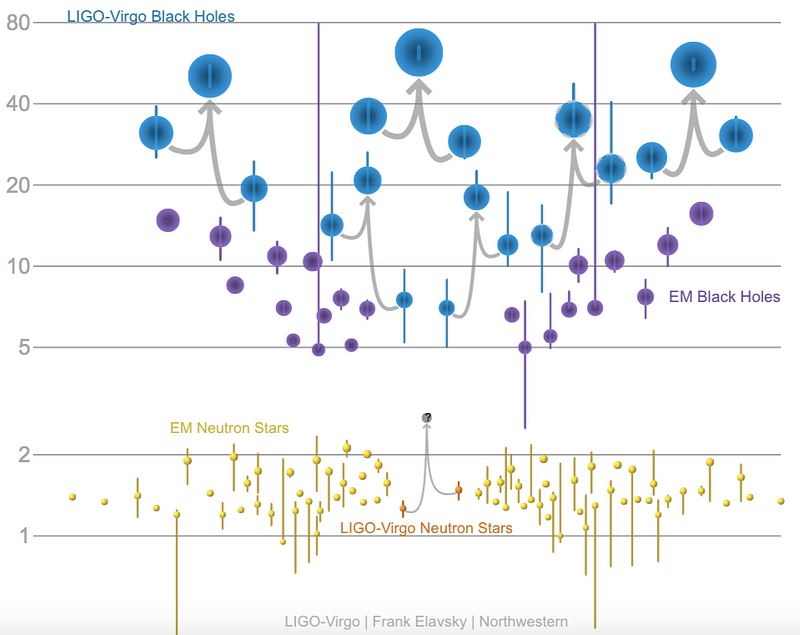
For a time, most people assumed this wasn’t a real effect, but that we were seeing the easiest objects to see: the more massive black holes. When the first gravitational wave detectors came online and started seeing events, however, they showed us a few surprises.
- Most of the black holes we were discovering were much more massive than the black holes we were finding with X-ray binaries.
- Lower-mass black holes were showing up, but none at or below the critical 5 solar mass threshold.
- Merging neutron stars were seen, with one in particular leading to the formation of a black hole in the “mass gap” range.
But that was it. As far as we can tell, there are no neutron stars above about 2.5 solar masses, and the only black holes we know of below 5 solar masses are formed from the mergers of two neutron stars.
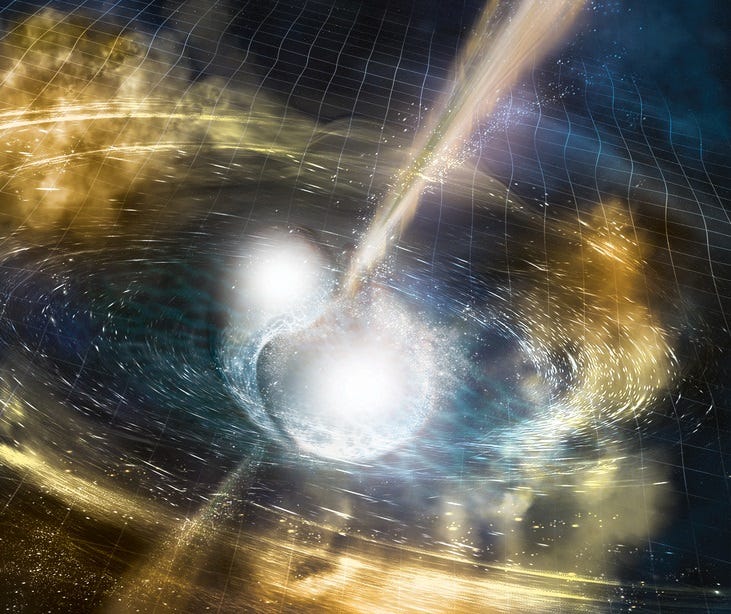
Why was this happening? Since 2010, scientists have been conjecturing possible astrophysical reasons for it. Perhaps the supernova explosions that created neutron stars were fundamentally different in some way from the supernovae that created black holes. Perhaps stars that would otherwise form those mass gap objects would experience a different fate instead, such as direct collapse. Perhaps it’s only the mergers of neutron stars that populates this gap, and that’s why we’ve seen so few.
Or, alternatively, perhaps there are actually plenty of these objects — all of which should be black holes above a certain threshold (2.5 solar masses for non-spinning objects; 2.75 solar masses for rapidly spinning ones) — and our technology just wasn’t good enough to find them yet. Advanced LIGO began operating again, after an upgrade, in April of 2019. In the nearly-a-full-year since, it appears to have answered this question.
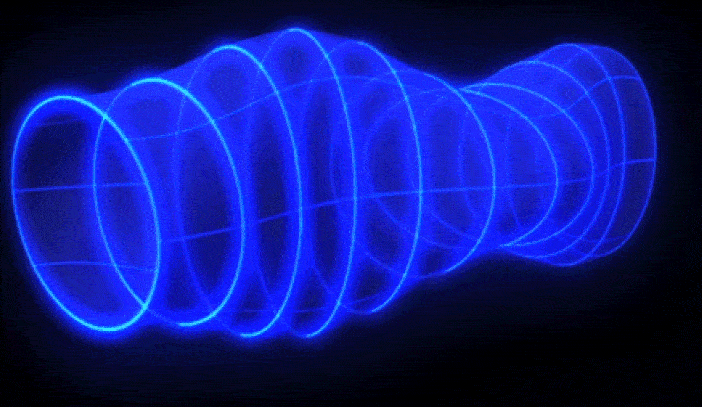
Every time two massive objects inspiral and merge together, they emit gravitational waves. If they have the right frequency and amplitude, then a sufficiently accurate gravitational wave detector should be able to measure those waves as they pass through. Sometimes, a false alarm happens, and the candidate signal is retracted. Over approximately the past year, however, the LIGO alerts system has found a whopping 56 candidate events that have held up over time, unretracted.
This represents about a 400% increase over all the gravitational wave events detected prior to April of 2019, with the overwhelming majority representing massive black hole-black hole mergers. Other events, such as neutron star-neutron star mergers and neutron star-black hole mergers, appear to have been detected as well. But for the first few months, even as these new events poured in, there were no mass gap events at all.
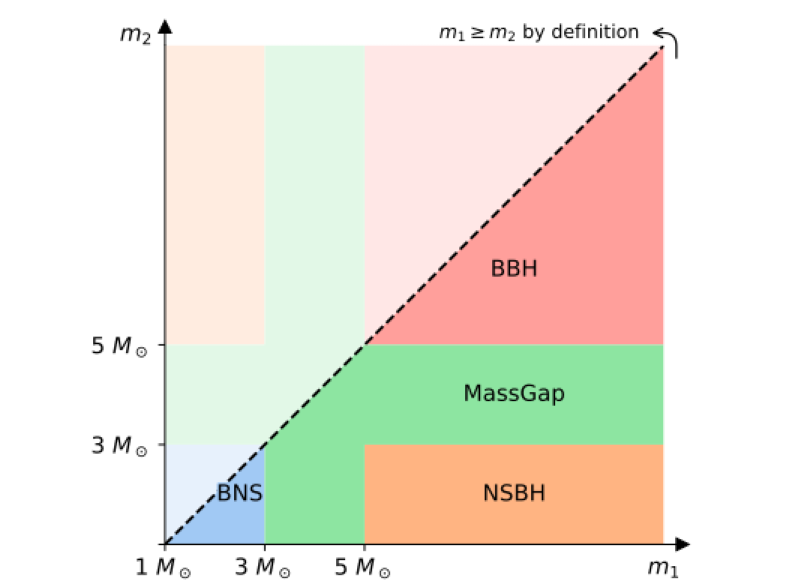
On August 14, 2019, the first candidate event that appeared to fall into this forbidden “mass gap” range was announced, but hopes were quickly squashed. Follow-up analysis indicated that this was, instead, a neutron star-black hole merger. Such an event, if confirmed, would still be rare and interesting, but not a solution to the mass gap problem.
However, the past six months have seen an explosion in these events, including:
- a 99%+ probability mass gap event on September 24, 2019,
- a 95% probability mass gap event on September 30, 2019,
- a 99%+ probability mass gap event on January 15, 2020,
- and a 99%+ probability mass gap event on March 16, 2020.
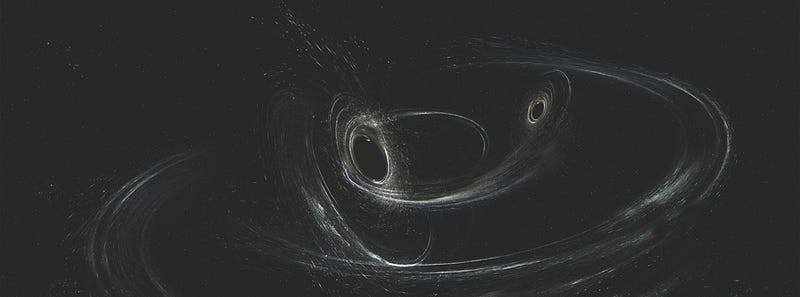
There is a non-negligible chance that a few of these may be false positive events, but the probabilities are low. In addition, thanks to contributions from the Virgo detector, the sky localization for all four of these candidate detections (known as superevents) are very good, and no electromagnetic counterpart was seen for any of them. Everything is consistent with these objects being black holes, both before and after their mergers.
If even one of these events turn out to be real and robust — with progenitor masses located between 2.5 and 5 solar masses — this would be the lowest mass pair of merging black holes ever seen in gravitational waves: a remarkable new record. But if even two or three of them turn out to be real and robust, the implications are literally field-altering, as it would imply that the mass gap itself does not exist.
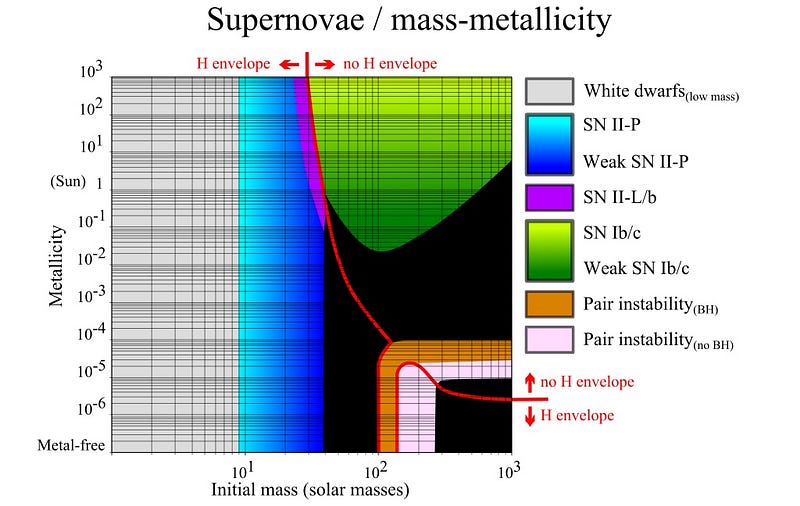
This shouldn’t come as a surprise. The first and second runs of LIGO, which have led to detection of more than a dozen different mergers of black holes and neutron stars, possessed a significantly lower sensitivity than the current, ongoing run. The increased sensitivity (and number) of our gravitational wave detectors mean that we can detect objects now that we couldn’t before, including:
- at greater distances,
- with more extreme mass ratios,
- at lower mass thresholds overall,
- and for longer periods of time, beginning earlier in the inspiral phase than before.
When the LIGO and Virgo collaborations take the step of transforming these superevents from candidate detections to full-fledged verified, published events, they will begin to fill in this mass range. What was once a gap, at that point, will suddenly become populated with black holes that had never been seen before.
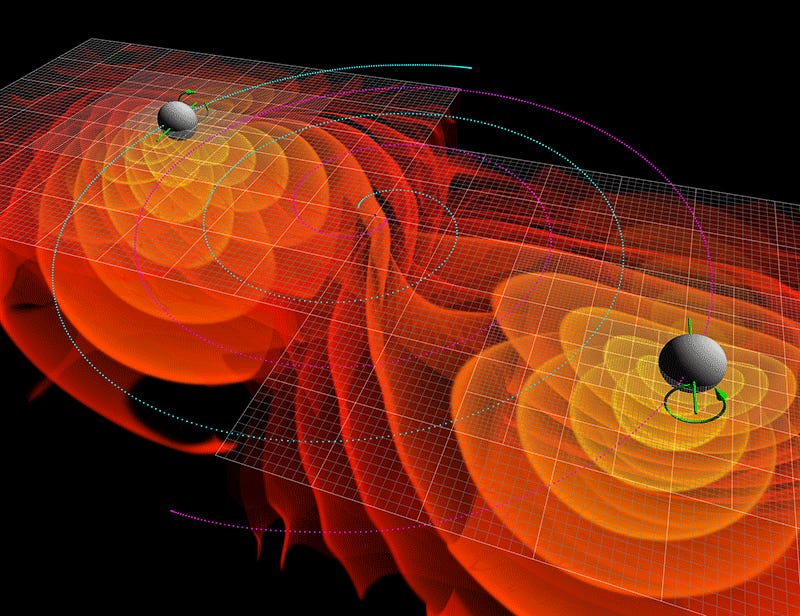
For decades, we knew only of neutron stars that existed below about twice the Sun’s mass, and black holes that existed at or above about five times the Sun’s mass. Beginning in 2017, we started to see neutron stars merging together to form black holes that fell into that empty range, but those events were relatively infrequent. However, this latest discovery — of two low-mass black holes merging together to form a heavier black hole — should close off the “mass gap” range for good.
What was once a region of unknowns should now be filled in by black holes. Although there’s still a lot of science left to do to determine how rare or common black holes of different masses are, particularly in the realm of population statistics, it would now be very surprising if there were a gap in masses between neutron stars and black holes. LIGO’s latest data has demolished that idea. Despite cries of, “NOT NOW LIGO,” the Universe continues to send data our way, and our scientific discoveries go on.
Ethan Siegel is the author of Beyond the Galaxy and Treknology. You can pre-order his third book, currently in development: the Encyclopaedia Cosmologica.



